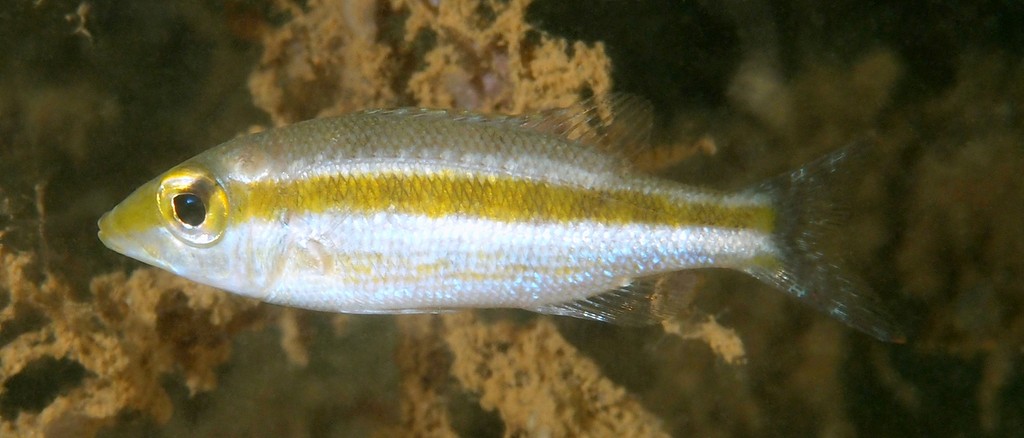LETHRINUS VARIEGATUS - (VALENCIENNES, 1830)
Actinopterygii (Gigaclass) > Actinopteri (Class) > Teleostei (Subclass) > Acanthuriformes (Order) > Lethrinidae (Family) > Lethrininae (Subfamily) > Lethrinus (Genus)
Bossu varié, Bossu rond, Bec-de-cane bigarré, Bec-de-cane tacheté, Capitaine baxou, Empereur bas cou, Slender emperor, Stender emperor, Variegated emperor, Bont keiser, Bunqus khermawi, Ladrão moteado, Emperador moteado, ホソフエフキ, Hoso-fuefuki, 雜色裸頰鯛,
Synonymes
Lethrinella variegata (Valenciennes, 1830)
Lethrinella variegatus (Valenciennes, 1830)
Lethrinus latifrons (Rüppell, 1838)
Lethrinus variagatus (Valenciennes, 1830)
Lethrinus variegates (Valenciennes, 1830)
----------------------------
Description
Dorsal spines (total): 10; Dorsal soft rays (total): 9, the fourth dorsal spine usually the longest, its length: 2.0-2.5 times in body depth; Anal spines: 3; Anal soft rays: 8, the first soft ray usually the longest, its length approximately equal to or shorter than the length of the base of the soft-rayed portion of the anal fin and 0.6-0.8 times in the length of the entire anal fin base; Pectoral fin rays: 13; Pelvic fin membranes between the rays closest to the body without dense melanophores. Lateral line scales: 45-47; Scale rows between lateral line and middorsal fin spines: 4½; Scales in supratemporal patch: 4-7; Inner surface of pectoral fin axils scaleless; Posterior angle of operculum fully scaled. Transverse scale rows: 13-14 from anal fin origin to lateral line. Rows in cower series of scales around caudal peduncle: 14-15; Body very slender, its depth: 3.2-3.9 times in Standard Length. Head length: 1.2-1.4 times in body depth, 2.6-2.9 times in Standard Length, dorsal profile near eye convex; Snout length about: 2.3-2.7 times in Head Length, measured without the lip the snout is 0.8-0.9 times in cheek height, its dorsal profile nearly straight, snout angle relative to upper jaw between 50 and 60 degrees. Interorbital area nearly flat or convex. Posterior nostril a vertical oblong opening, closer to anterior nostril than to orbit, or closer to orbit than anterior nostril; Eye situated close to dorsal profile, its length: 3.5-4.4 times in Head Length; Cheek without scales, cheek length: 3.0-3.8 times in Head Length; Lateral teeth in jaws conical; Outer surface of maxilla smooth. Max. length: 35.0 cm TL, commonly: 20.0 cm TL. Max. reported age: 15 years. Depth range: 1 - 150 m.
Color
Body is brown and gray (usually green), becoming lighter ventrally, with scattered irregular dark spots. Often there are two dark bands below the eye, one at the lower rim or the opercle and one at the corner of the mouth. The fins are generally light or translucent. The caudal fin is light and dark striped.
Etymology
Lethrinus: from Greek, lethrinia, a fish pertaining to genus Pagellus (Pagellus erythrinus (Linnaeus, 1758)), a Mediterranean fish looking like Lethrinidae family.
variegatus: from Latin, variego = variegated, Streaked, spotted, speckled, or otherwise marked with a variety of color, very colorful.
Original description: Lethrinus variegatus Valenciennes, 1830 - Type locality: Massawa, Eritrea, Red Sea; Suez, Gulf of Suez, Red Sea.
Distribution
Red Sea; Indo-West Pacific: KwaZulu-Natal (South Africa), East Africa, Socotra (Yemen), Seychelles, Mozambique Channel, Madagascar and Mascarenes (La Réunion, Mauritius, Rodrigues), east to Palau and Tonga, north to Ryukyu Islands (Japan), south to Kimberley (Western Australia) and Queensland (Australia) and New Caledonia.
Biology
Inhabits sandy and weedy areas near coral reefs, solitarily or in groups, where it is well camouflaged and usually swims in the cover of the substrate. Juveniles sometimes abundant in shallow, weedy areas. Solitary or in small groups. Feeds on small benthic invertebrates. Flesh of large individuals is esteemed. A protogynous hermaphrodite. A monandric species. Length at sex change = 29.1 cm TL.
Similar species
Lethrinus microdon (Valenciennes, 1830) - Reported from Red Sea; Indo-West Pacific: East Africa, Gulf of Oman, Persian Gulf, Seychelles, Madagascar and Mascarenes (La Réunion, Mauritius, Rodrigues), east to Palau and New Ireland (Papua New Guinea), north to Kyushu (southern Japan), south to Western Australia.
Lethrinus rubrioperculatus (Sato, 1978) - Reported from New Caledonia - Body color is olive-gray or brown, with scattered irregular small black blotches.
Last update: 19, July 2023
